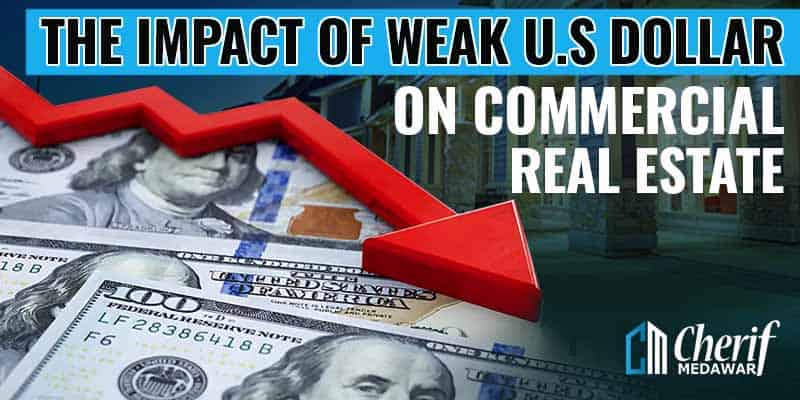12 CRE Asset Classes: A Comprehensive Guide to Investing in Profitable Properties
Welcome to our comprehensive guide on the 12 CRE asset classes dominating the real estate market. As experts in commercial real estate (CRE), we understand the importance of making informed investment decisions. This article will provide detailed insights into each asset class, including apartments, storage facilities, hospitality properties, eco-friendly developments, retail spaces, office and medical buildings, land development opportunities, mobile homes, warehouses, parking garages, senior facilities, and gas stations. By the end of this guide, you’ll have a solid understanding of these asset classes and be better equipped to make strategic investments in the ever-evolving Commercial real estate industry. 12 Commercial Real Estate Assets Apartments: The Steadfast Residential Asset apartments are a cornerstone of the real property market, imparting investors stable profits streams and lengthy-time period increase ability. With an increasing number of individuals opting for rental accommodations, investing in apartments has become an attractive option for both seasoned and novice investors. The multifamily sector provides numerous investment opportunities, from small-scale condo complexes to high-upward push luxury houses. Considerations such as location, vacancy rates, rental demand, and amenities play crucial roles in determining the profitability of apartment investments. Storage Facilities: The Lucrative Space Solution Storage facilities have experienced a significant surge in demand over recent years, making them a good asset class for savvy investors. As the need for additional space grows, storage facilities offer a reliable source of income and a hedge against economic downturns. These facilities cater to various markets, including households needing extra storage, businesses requiring warehousing solutions, and individuals seeking secure vehicle storage. Investing in well-located storage facilities with modern amenities and excellent security measures can yield substantial returns on investment. Hospitality Properties: Where Comfort Meets Profitability The hospitality industry encompasses many properties, such as hotels, resorts, and vacation rentals. This asset class provides an opportunity to capitalize on the ever-growing tourism and travel sectors. Hospitality properties can generate consistent revenue streams through room bookings, dining services, event spaces, and other amenities. Understanding the local market, tourism trends, and guest preferences is essential for success in this asset class. Strategic partnerships with reputable hospitality management companies can also enhance the profitability of your investments. Eco-Friendly Developments: Investing in Sustainability With the global focus on environmental conservation, eco-friendly developments have emerged as a promising asset class. These properties integrate sustainable features like renewable energy systems, water-saving technologies, and eco-conscious designs. Investing in eco-friendly products aligns with responsible investing principles and offers the potential for long-term cost savings and increased tenant appeal. As sustainability continues to gain prominence, the demand for environmentally conscious properties is expected to rise steadily. Retail Spaces: Capitalizing on Consumerism Retail spaces serve as the backbone of commercial real estate, offering investors diverse opportunities. From shopping malls and strip centers to stand-alone storefronts, this asset class provides exposure to various industries and consumer segments. When investing in retail spaces, location, foot traffic, tenant mix, and market trends should be carefully analyzed. The rise of e-commerce has impacted the retail sector, making it crucial to focus on experiential retail concepts and adaptability to changing consumer preferences. Related: Top Markets for Commercial Real Estate Investment in 2023 Office & Medical Buildings: Catering to Professional Needs Office and medical buildings cater to the demands of professionals seeking workspaces and healthcare services, respectively. These asset classes provide consistent cash flow and long-term stability, often bolstered by lease agreements with established businesses and healthcare providers. When investing in office and medical buildings, understanding market dynamics, vacancy rates, and the demand for specialized services is crucial. Location plays a vital role, as accessibility and proximity to business centers or medical facilities can significantly impact the attractiveness of these properties to potential tenants. Land Development: Unlocking Potential Value Land development presents an opportunity to create value by transforming undeveloped or underutilized parcels of land into profitable assets. This asset class requires a thorough understanding of zoning regulations, market demand, and development feasibility studies. Investing in land development entails assessing factors such as location, infrastructure availability, and the potential for future growth in the surrounding area. Working closely with architects, engineers, and local authorities can help navigate the complexities of land development projects. Mobile Homes: Affordable Housing Solutions Mobile homes, also known as manufactured homes, provide an affordable housing option for many individuals and families. This asset class offers an opportunity to invest in rental communities or individual mobile homes. The demand for affordable housing continues to rise, making mobile homes an attractive investment option. Factors to consider include location, park management, amenities, and local regulations. Investing in well-maintained mobile home communities with solid occupancy rates can yield stable cash flow and potential appreciation. Warehouses: The Backbone of Supply Chains Warehouses play a crucial role in the logistics and distribution networks of businesses. With the growth of e-commerce and the increasing need for efficient storage and fulfillment centers, investing in warehouses has become an appealing option. Key considerations include location, proximity to transportation hubs, ceiling height, loading dock capacity, and technological advancements in warehouse management systems. Investing in strategically located warehouses can provide consistent rental income and capitalize on the expanding e-commerce market. Parking Garages: Meeting the Need for Vehicle Storage As urbanization continues and parking becomes increasingly limited, investing in parking garages presents an opportunity to meet the growing demand for vehicle storage. Parking garages can be stand-alone structures or integrated into more significant developments. Factors such as location, proximity to high-traffic areas, parking capacity, security measures, and technology-driven parking management systems should be evaluated. Investing in well-designed and efficiently operated parking garages can yield steady income streams from daily, monthly, or event-based parking fees. Senior Facilities: Meeting the Needs of Aging Populations With the aging population, investing in senior facilities has gained significant attention. This asset class includes retirement communities, assisted living facilities, and nursing homes. Providing comfortable and specialized care for seniors can be financially and ethically rewarding. When investing in senior facilities, key considerations … Read more










